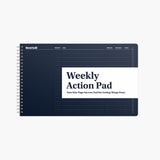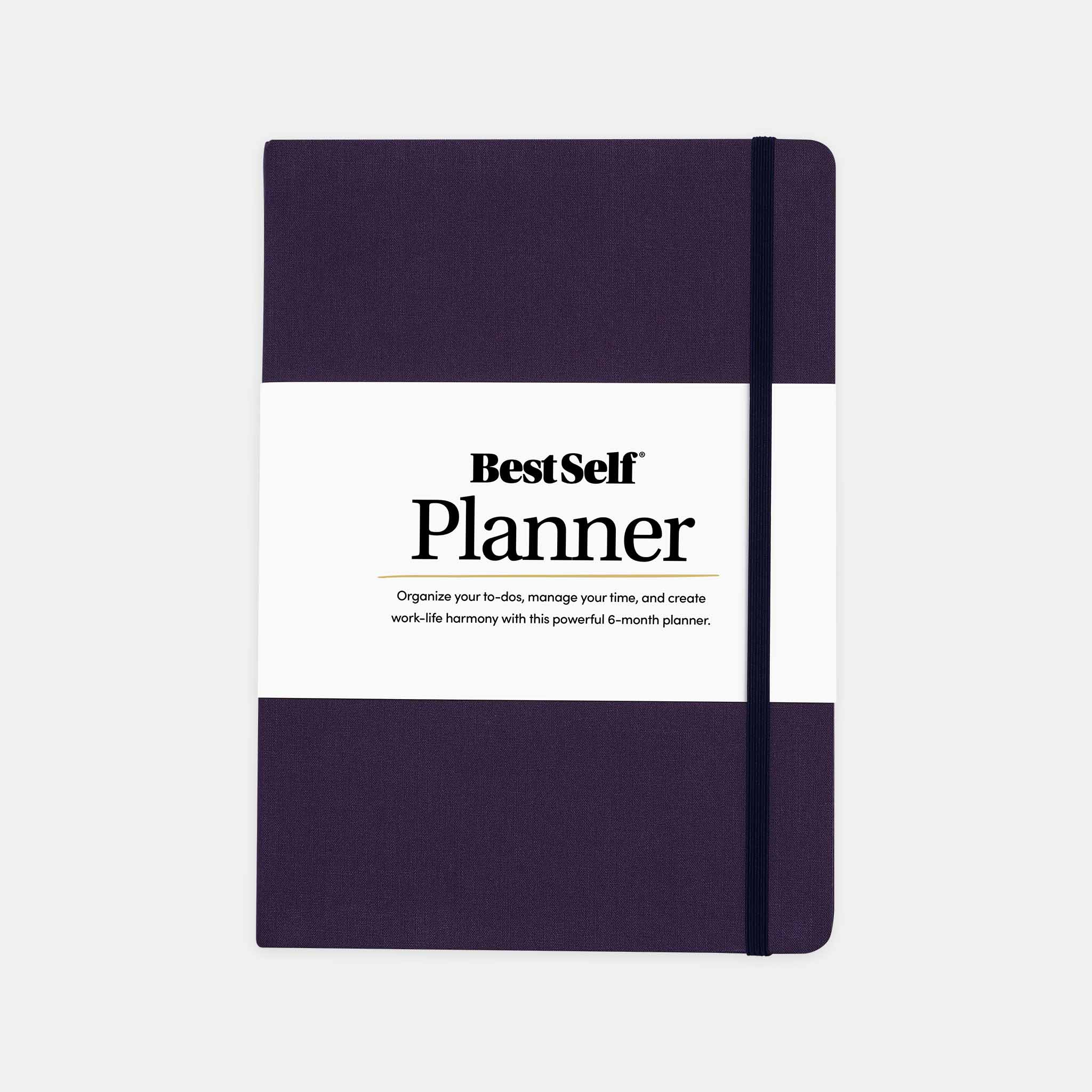A monthly, calendar view is a useful tool for planning your life and achieving your goals. With a monthly planner, you can keep dates, appointments, meetings, birthdays, deadlines, and reminders in one easy-to-see place.
It’s a life hack! Instead of frantically trying to remember everything in your head (which let’s face it, is impossible!) Instead, you can use this ‘external brain’ to capture all the things you need to keep top of mind.
No more double-booking. No more showing up late. And no more frantically trying to swap plans around at the last-minute because you forgot you said yes to your friend’s party invite!
But what if your monthly planner could be more than a place to log your dates.
What if you could use this powerful tool to help you achieve your goals too.
Good news! You can, when you integrate monthly planning into your broader planning process. And if you keep reading, you’ll find out how.
Sharpen your focus, get the needle moving
It’s a fact that good planning is at the heart of your best life. When you identify all the parts and pieces and fit them into a bigger picture that works, you can be more productive and achieve your goals.
Good planning makes you feel good too.
When you’re organized with all your ducks in a row, you feel more confident and capable.
You’re able to juggle more, take on more, and do more without burning out.
Instead of feeling like a scatterbrain, you know exactly where you are and what you need to do.
Good planning is a multi-dimensional process - especially when you’re planning a life you love. You don’t just want to stay afloat by checking through that do-do list alone. Instead, you want work-life harmony. You want to have time for fun, your relationships, your health, and your hobbies too.
That’s why good planning - whether that’s your daily overview or your monthly planner - always starts with setting goals.
What do you want to achieve?
When planning to achieve goals, we recommend you work with a three monthly planner.
Set yourself a three-month goal.
That’s long enough to achieve something significant, but short enough to prevent overwhelm and keep the finish line in sight.
It’s a strategy that will inspire you to keep moving - and when you’re trying to hit big goals, you need all the motivation you can get!
Even a three-month, achievable goal can feel like a stretch at the very beginning.
The nature of goals mean they’ll push your out of your comfort zone and require you to take difficult decisions. Although there’s gold at the end, if can feel very uncomfortable getting there.
That’s why different level planning is key.
Step 1: Plan your three month goal using a tool such as the Self Journal
What do you want to achieve by the end of three months? Will you lose weight, launch a product, increase your revenue, or double your personal savings.
Set a goal that’s Specific, Measurable, Achievable, Realistic, and Time-bound and you’ll give yourself the focus you need to achieve.
With the finish line laid out, you can focus your attention on planning how to cross it. You’ll need your monthly planner for this.
Step 2: Map out your monthly milestones using a monthly planner.
Your monthly planner can be used for a variety of purposes.
1. Use your monthly planner to keep track of deadlines and commitments
On your monthly planner, mark out all your key dates for the month. Use this planning view to capture things such as appointments, deadlines, days out, and vacations.
Get all these dates out of your head and onto paper and you’ll be able to see where the white spaces are. This step will help you achieve your goals in a number of ways:
Life shouldn’t be all work, work, work. You need to have downtime too. Your monthly planner can help you do this by showing you what non-work things you’ve got coming up.
Create the bigger picture for your month and you can see where you’re falling short. When you know, you can take action to improve the balance.
- Use your monthly planner to track your habits
Let’s say you want to get into the habit of writing every single day. Here’s how easy it is to turn your monthly planner into a motivational boost that inspires you to keep going:
Remember, you can track more than one habit using your monthly planner. Simply use a different success mark for different targets.
Step 3: Plan your week
With your monthly view sorted, you can move to your weekly view using a tool such as the Weekly Action Pad. Your goals should be to identify everything you need to complete over the next 7 days.
Step 4: Plan your days
With your weekly view complete, you can now plan your days - something the Self Journal will help you do.
Plan your life and become the person you know you can be
Planning is key to a productive, successful life.
But you’ll get better results when you plan at multiple levels.
Used alongside quarterly, weekly, and daily pages, a monthly planner is a powerful tool that will help you achieve your goals.
So if you big things you want to achieve, set yourself up for success with tools that help you master your time so you can do it all.
With quality planning, you can match tasks with time slots and get yourself ahead of the game.
It’s a powerful way to move the needle, hit your goals, and become the person you always wanted to be.





































